
Quick facts
Lawn weeds are mostly UK native wildflowers
The more plants growing in your lawn, the more biodiverse and wildlife-friendly it will be
Species-rich lawns are lower maintenance than those containing just a few selected lawn grasses
Removing plants that you consider to be weeds takes time and effort
If you want to remove weeds from your lawn, non-chemical controls are effective
Common lawn weeds
Lawn weeds tend to be tough, , low-growing plants that are tolerant of regular mowing and foot traffic. They often have creeping, rooting stems or readily produce seed, and are quick to colonise bare ground where grass growth is patchy.
Common lawn weeds include:
Clovers
Coarse grasses, such as couch grass
Creeping buttercup
Creeping cinquefoil
Daisies
Dandelion
Dove’s foot cranesbill
Field wood-rush
Plantain
Sheep’s sorrel
Speedwell
Yarrow
Algae, lichens, liverworts and mosses are also commonly found in lawns, particularly those in shade or on poorly drained soil.
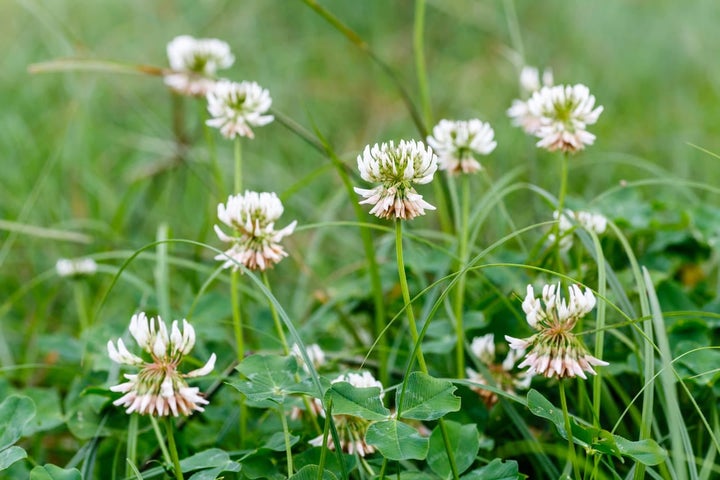
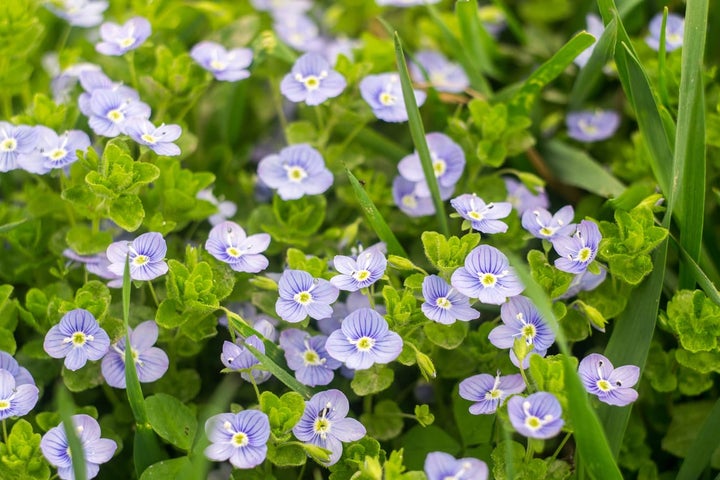
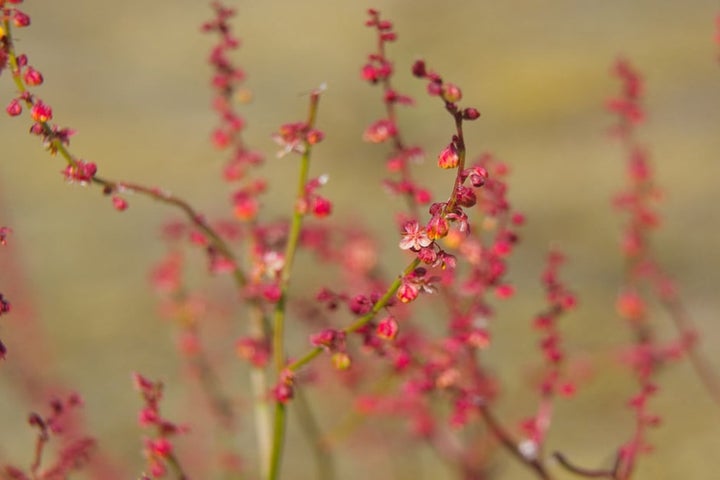
What is a weed?
The term ‘weed’ describes a plant that is growing where it isn’t wanted. Weeds usually thrive in average garden conditions, reproducing and spreading easily. It is up to you to decide what you call a weed and what you choose to retain or remove.
Do I need to get rid of weeds in my lawn?
No – most lawn weeds are UK wildflowers that support a wide range of garden wildlife. Dandelions, for example, are a valuable early source of nectar for bees, creeping buttercup has pollinator-friendly flowers that attract butterflies and hoverflies, and yarrow is a food plant for 42 different species of moth.
Many lawn weeds have attractive flowers and foliage, and allowing a variety to grow in your lawn can create a colourful tapestry. Some, like clovers, are more drought tolerant than lawn grasses, meaning they stay green throughout long, dry summers. And, as species-rich lawns generally don’t require frequent mowing, or any feeding or watering, they are a low maintenance and low input option.
Many gardeners are now deliberately choosing clover or lawns over all-grass options and adopting practises like differential mowing, No Mow May and Let it Bloom June to encourage plant diversity in their lawns and the benefits it brings.
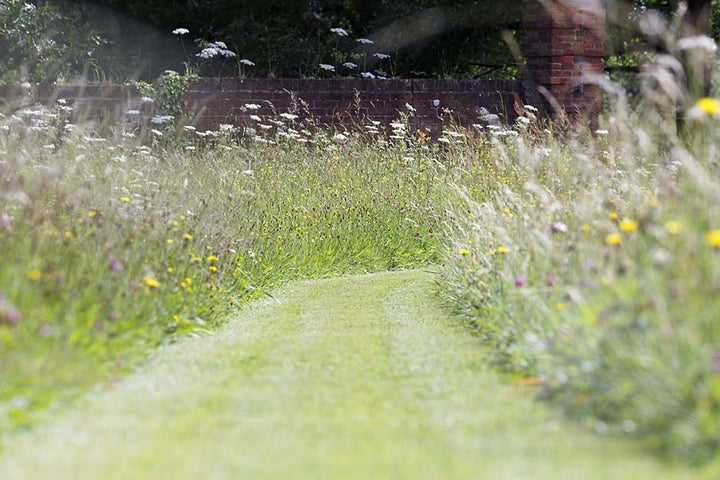
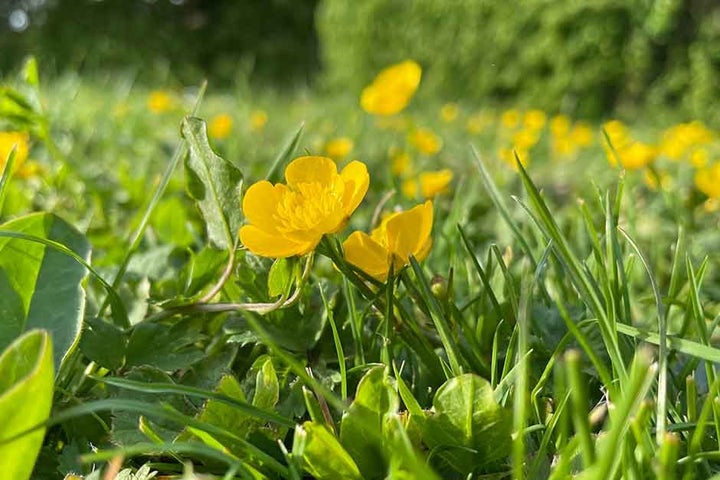
However, if you dislike the look of a or are finding fast-spreading species becoming too numerous, you may wish to reduce their numbers.
How can I remove lawn weeds?
It takes time and effort to get rid of lawn weeds and isn’t necessary, so the easiest option is to welcome them as wildflowers rather than strive for a manicured, all-grass lawn. However, if you really want to remove them, there are several options:
- Spot weeds early – use our weed pages to identify unwanted plants that appear in your lawn and learn about the best ways to control them. RHS members can also use MyAdvice for help identifying and controlling weeds.
- Keep lawns growing well – a programme of spring/summer and autumn lawn maintenance encourages dense, healthy grass growth, making it more difficult for weeds to establish and spread.
- Remove weeds by hand – use a hand fork or specialist weeding tool to dig out individual weeds. There are many different weeding tools on the market, including those that can be used from a standing position and those like ‘dandelion weeders’ that are designed for weeds with long taproots. Re-seed or lay turf in spring or autumn to repair resulting bare patches.
- Tackle patches of weed growth – if part of your lawn is especially weedy, use a sharp spade to cut out and lift turf from the area. Remove weed roots, lightly fork over the soil, rake it level, then tread it down and lay fresh turf. This is a good option where you have creeping weeds like clover that grow through grass and are difficult to remove by hand.
- Rake before mowing – rake over areas containing creeping weeds, such as creeping buttercup and speedwell, so the mower can cut, collect and remove their low-lying stems.
- Raise the cutting height – avoid mowing the lawn very short, especially in summer, as this can weaken grass and lead to bare patches that allow weeds to establish. For advice on when and how to adjust mower blades, see our guide to mowing.
- to limit spread – if you don’t mind some wildflowers in your lawn but don’t want them to become abundant, remove faded flowers before they set seed. Use secateurs to remove individual flowers, like those of dandelions, or mow regularly to deadhead areas of low-growing lawn weeds.
- Lime to reduce acidity – if you have and are finding acid-loving plants like sheep’s sorrel and field wood-rush becoming too numerous, apply lime to raise soil and discourage weed growth. See our guide to lime and liming for more advice.

Should I use a weedkiller?
No – although it can take patience and persistence to remove lawn weeds, non-chemical methods are effective, so there is no need to use a weedkiller. Selective lawn weedkillers can cause damage to other plants when contaminated lawn clippings are added to and used as a . See our page on weedkiller damage for information on the risks involved in using lawn weedkillers.
Did you know?
Lawn weedkillers and fertilisers are often sold together as ‘weed and feed’ products and offered as part of routine maintenance by lawn care companies. Not only do these products reduce lawn biodiversity, but they are often unnecessary, as most lawns do not need regular feeding to stay green and healthy. Weedkillers and fertilisers also have big environmental impacts. So, if you need to control weeds, stick to the non-chemical methods described above, and if your lawn is low in vigour and needs feeding, choose a proprietary fertiliser and apply it carefully.














